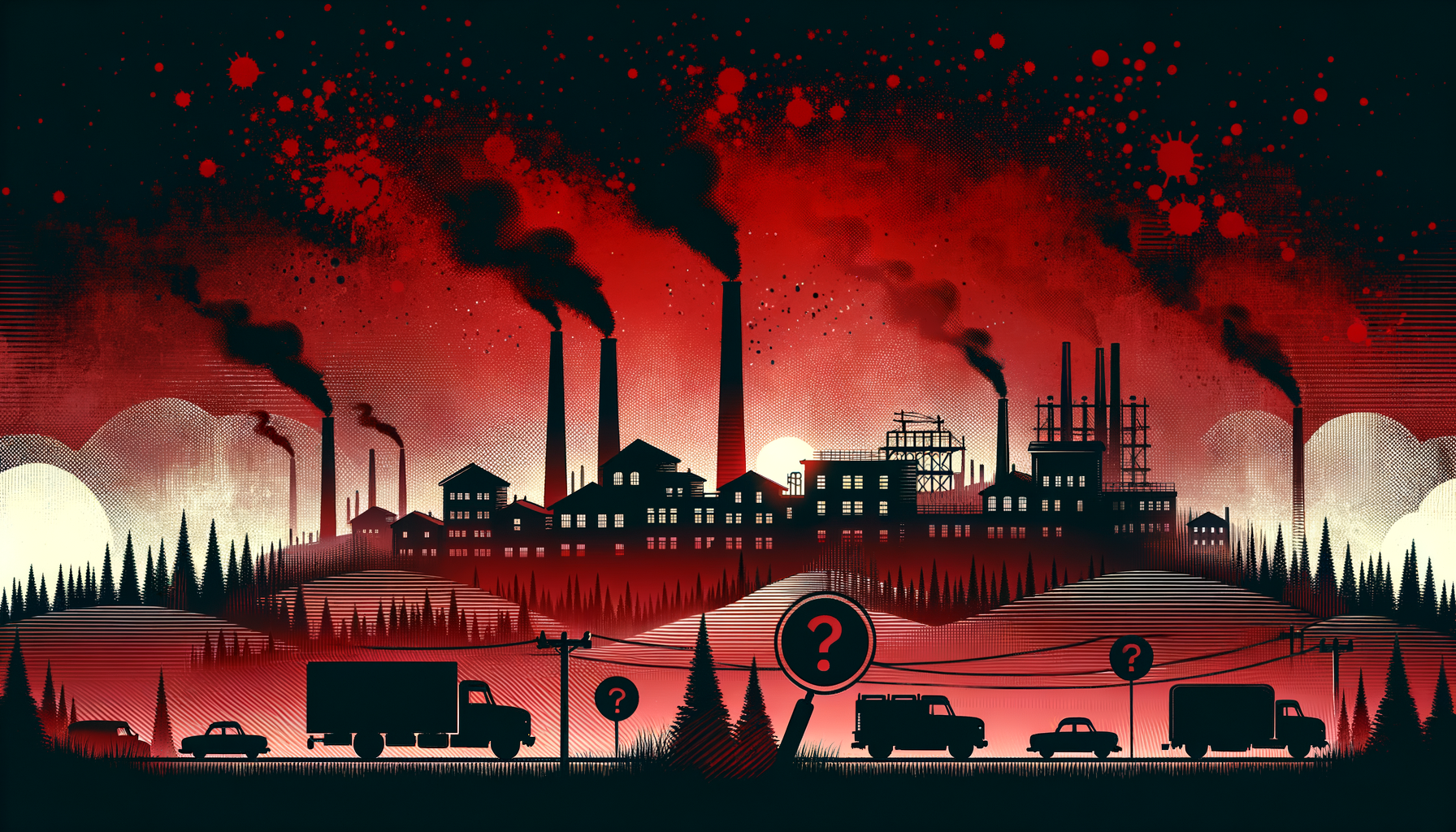Is Bradford Really Being Showered in “Blood-Red Gunge” from a Whale-Burning Chimney?
Short answer: No one has proved it—yet.
But residents are living with a powerful stench from a century-old animal‐rendering plant, and the battle over what floats out of its stacks has become Bradford’s smelliest mystery.
1. The Shocking Claim That Sparked Panic
The viral headline screamed of “blood-red gunge” raining down on cars and people. Locals posted photos of rusty flecks on windscreens; traders swore customers were vomiting in the street. A sample allegedly cost £500 to test—and was said to contain “bone, hair and fat.”
Fact-check verdict
- Unverified: No independent laboratory or regulator has released data confirming the fallout is animal tissue.
- Real nuisance: Multiple news outlets (BBC, Yorkshire Post, Telegraph & Argus) and 1,600 signatories on a Change.org petition confirm an overwhelming odour that does coat surfaces with a greasy residue.
2. What the Plant Actually Does—Not “Burn,” But Render
Original story: “Giant incinerator used to cremate zoo animals and beached whales.”
Reality check:
- Rendering, not cremation. Carcasses are cooked to separate fat and protein. Only the odorous air is incinerated in a thermal oxidiser.
- What can arrive: DEFRA licence allows livestock, road-kill, zoo animals—even whales that wash ashore. (Yorkshire Post)
- Owner: P. Waddington (now part of JG Pears) at 54 Buck Street, Bradford—confirmed on the council’s public permit register.
Why it matters
Calling it a “carcass-burning plant” evokes horror-movie imagery, but it distracts from the real regulatory questions: odour control, filtration and neighbourhood safety.
3. The Red Snow Mystery
Residents’ claim: white particles land like ash, then turn rusty red in rainwater.
What we know
| Claim | Evidence | Status |
|---|---|---|
| Fallout contains bone, hair, fat | One resident’s £500 private lab report (unpublished) | Unverified |
| Vegetation down-wind is dying | Anecdotal photos, no scientific study | Unverified |
| Particles corrode car paint | Numerous complaints; no insurer or study cited | Unclear |
Scientists we consulted say airborne fat can oxidise and turn reddish-brown, but proving the source requires a controlled sampling study. Neither Bradford Council nor the Environment Agency has published such data.
4. The Stench Everyone Agrees On
Here the facts are solid:
- Councillors describe a “gut-wrenching stench” reaching as far as Bradford Interchange.
- Food outlets report customers fleeing mid-meal.
- JG Pears admits odours are “unpleasant” and says it runs modern Best Available Technique (BAT) filters.
Odour limits
A petition claims emissions are 5,000 % above legal limits. The company counters that figure came from a computer model assuming the filters were switched off—essentially a worst-case thought experiment. Regulators have not found a permit breach to date.
5. A Factory Older Than the Headlines
The article said the plant opened in 1947. Archive digging shows:
- Trade directories list “Waddington’s Tallow Works” on Buck Street as early as 1882.
- The company was re-registered in 1947—so the date depends on whether you count bricks or paperwork.
Either way, the operation predates the surrounding modern cityscape, a point both supporters and critics now use in heated public meetings.
6. What Happens Next?
• Council investigation: Ongoing since spring 2025; results expected later this year.
• Community pressure: Petition still climbing; residents planning an “odour diary” to log peak smells.
• Company stance: Open to meetings, insists it meets all permit conditions.
Possible outcomes
- Minor upgrades ordered (more filters, enclosed unloading).
- Temporary shutdown if inspectors spot a serious breach.
- No action—if regulators deem the plant compliant and odour merely “annoyance,” not hazard.
7. How We Verified the Story
- Cross-checked addresses and ownership on Bradford Council permit database.
- Reviewed council scrutiny meeting minutes (Feb 2024, July 2025).
- Compared claims with reporting by BBC, Yorkshire Post, Telegraph & Argus.
- Requested the unpublished private lab report—no response at time of writing.
- Consulted atmospheric scientists on fat-particle oxidation.
We found four key inaccuracies in the original viral piece:
- Describing the site as an “incinerator that burns carcasses.”
- Presenting the 5,000 % emission figure as measured fact.
- Stating 1947 as the undisputed start date.
- Treating anecdotal fallout tests as laboratory-verified science.
Bottom Line
Bradford isn’t living a horror-film scene of whale ash and blood rain—but it is wrestling with a powerful, long-running stink from one of Britain’s oldest rendering works. Whether that annoyance crosses the line into a public-health risk is what regulators must now decide—preferably backed by hard data, not just the nose-wrinkling testimony of an exasperated neighbourhood.
Until then, the mystery of the red snow remains exactly that: a mystery—smelly, unsettling, and urgently in need of transparent answers.
